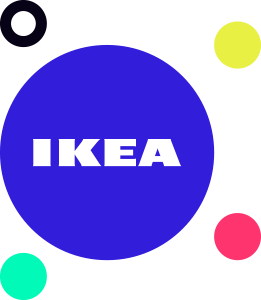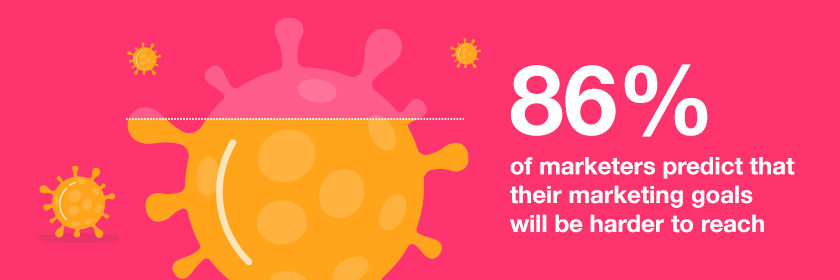
Covid-19 marketing campaigns: The good, the bad, and the unfortunate
Brands felt compelled to respond to the pandemic. But not all of them got it right.
When future generations look back at 2020, there will be bigger and more serious things to discuss than the trends in marketing. That being said, as marketers we are interested in how major events trigger and shape brand responses.
Within just half a year, the planet experienced some of the biggest and most rapid changes in human behavior imaginable. Entire populations retreated indoors, physical contact became taboo, travel routes dried up, and whole industries went to the brink of collapse.
How did brands and marketers respond to the pandemic?
Let’s face it: coronavirus took most of us by complete surprise. At the beginning, nobody in the industry really saw what a huge impact it would have.
Organizations were forced to make quick decisions and adjustments to facilitate the emerging consequences: halts in production, disruption of supply lines, remote working as the only option, (for many) rapidly falling revenues and the looming threat of layoffs.
84% of marketers confirm they have ‘improvised to generate new marketing strategies during the pandemic’
The CMO Survey: Special Covid-19 Edition: June 2020
Marketers were forced to take equally rapid decisions about campaigns, product launches, and strategies. More than half (55%) postponed or reviewed campaigns and product launches, and 60% cut or reviewed budgets.
Everything suddenly had to be looked at again in light of the transformed landscape. Marketers were challenged to respond with creativity and agility.
What do consumers expect from brands during this time?

One thing’s for sure: consumers don’t expect brands to keep quiet. Only 8% thought that brands should stop advertising, reports Kantar.
Their study of more than 35,000 consumers also revealed that:
- 80% believe employee health should be a key priority for companies
- 78% believe brands should help consumers in their daily lives
- 75% say brands should inform people of what they’re doing
- 74% think companies should not exploit the situation
- 50% think companies should talk about their own brand in a carefree and light way
- 41% think brands should avoid humorous tones
- 30% want to see brands offering discounts and promotions
The clear trend is that consumers want brands to respond to the situation with empathy, openness, integrity, while continuing to communicate their brand and values.
Covid-19 marketing examples: The Good

IKEA: Stay Home
The Swedish furniture giant struck the perfect note with a subtle ‘silver lining’ advert, launched by its Spanish division. The video opens with “Hello, I’m your house”, followed by a gentle reminder of all the reasons that staying in our very own space for a while might not be such a bad thing after all.

Getty Museum: Art Challenge
We challenge you to recreate a work of art with objects (and people) in your home.
Choose your favorite artwork
Find three things lying around your house⠀
Recreate the artwork with those itemsAnd share with us. pic.twitter.com/9BNq35HY2V
— Getty (@GettyMuseum) March 25, 2020
This truly viral campaign captured the lockdown mood perfectly, combining boredom-busting creativity with a tribute to the arts: a major casualty of the pandemic. Their tweet challenge galvanised thousands around the world to create and share a humorous home masterpiece. It also crossed over to major media outlets including CNN, Buzzfeed, Forbes, and Time.

TikTok: #SafeHands
@who Join the WHO ##SafeHands challenge and show us how you practice ##handhygiene to be safe from ##coronavirus. Let’s fight ##COVID19 together!
The challenge-based video-sharing app has seen huge growth: downloads rose by 18% in the week when many lockdowns began. #SafeHands in collaboration with the World Health Organization (WHO), along with other hashtags, drove impressive activity growth. Tiktok enjoyed a 27% increase in engagement on sponsored posts.
Covid-19 marketing examples: The Bad

Boohoo: the ‘fashion face mask’
Early in the pandemic, before face masks had become an everyday necessity, the British fashion retailer tried to market them as a topical fashion accessory. The reaction was swift and furious, with the company branded ‘scandalous’ for trying to cash in on a crisis. The masks were ‘not designed for protection’, admitted Boohoo, withdrawing them from sale.

Paul Rudd x State of New York: ‘Certified Young Person’
Beginning on the edge of mildly-humorous-in-an-ironic-sort-of-way, this well-meaning public service announcement dives quickly off into the depths of cringeworthiness, passing through patronising, confused (does he mean millennials or Gen Z?), and one moment of disturbingly angry. Unlikely to resonate with its intended demographic, it has been widely panned.
The Unfortunate

Cadburys: Easter Egg Hunt
A case of awkward timing saw the chocolate brand launch a heartwarming Easter egg hunt story featuring a grandfather and his children on the eve of lockdown. Suddenly, with generations separated from each other due to social distancing, the ad struck a false note. The company had no choice but to withdraw it, which they did, issuing a sensitive statement.

Tourism Australia: There’s Still Nothing Like Australia
But the most unfortunate lot fell to the Australian tourism body, which launched a lavish new advertising campaign on 12 March 2020, only for lockdowns to begin within a matter of days. Travel into the country fell by 99% in April. It was groundhog day for the organization: only months before they had to cancel another campaign in light of the tragic bushfires.
What does the future hold for marketers?
As we move forward through the evolving situation, one thing seems crystal clear: marketing won’t be rushing ‘back to normal’ any time soon.

Research by Marketing Week found that:
- 65% of marketers anticipate a decrease to their annual marketing budget
- 86% of marketers predict that their marketing goals will be harder to reach
- More than half of marketers believe that SEO is now more important
Looking further ahead to the changes likely to persist post-pandemic, McKinsey sets out a series of 6 key trends and principles for marketers to pick up and run with:
- Shopping: Catching up to the great digital migration to expand digital borders
- E-services: New ‘service platforms’ to help consumers take care of business
- Home: Finding a spot in the new ‘command central’ for all activities
- Community: Localizing the experiences
- Trust: Creating a space for health and affordability
- Purpose: Holding brands to higher standards
Conclusion: Key takeaways
- Consumers expect brands to be present and active during this pandemic period, but appreciate a focus on more helpful and informative messaging.
- Successful brands have managed to lift the mood and impart positivity and creativity, without making light of the situation.
- Brands that failed were those appearing to be insensitive, opportunistic, or deploying humour that missed the mark.
- The pace of developments underlined the importance of timing and awareness, as many pre-Covid campaigns quickly became obsolete.
- Accelerated by the circumstances of coronavirus, data and digitalization continue to grow in importance as the online customer experience eclipses all others.
- Successful marketing will combine a solid underpinning of data and technology, with the empathy and agility that these times demand.
Your content marketing. Kickass or casualty? Take the content capability audit to assess how your content marketing strategy is performing. Plus, tailored tips to improve your game.
Read the latest positioning trends and insights.
Tap into our brand and product positioning, storytelling, and creative expertise to inspire your next strategic move.

